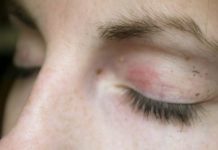What Are Deep-Set Eyes?
Deep set eyes are a distinctive eye shape where the eyes are positioned further back in the skull than is typical, resulting in a recessed appearance within the eye sockets. This anatomical feature often creates a more prominent brow ridge and a shadowed orbital area, which can influence the overall symmetry and aesthetics of the face. The eyes may appear smaller, and the eyelids can seem less pronounced, sometimes giving the face a more intense or dramatic look .
There is no universally accepted measurement or standard for diagnosing deep-set eyes. Instead, identification relies on the clinical experience and visual assessment of medical professionals. The diagnosis is typically based on the relative position of the eyes compared to the overall facial structure .
Understanding Eye-Related Symptoms and Features
Symptoms involving the eyes can be complex, as the eyes are integral to both the ocular and vision systems of the body. The ocular system encompasses the eye itself and its central vision components, such as the cornea, lens, and eye fluids, all of which are essential for sight.

Eye-related symptoms may be:
- Congenital (present at birth)
- Acquired (developing later in life)
These symptoms can affect the structure and function of the eyes, including vision, or may simply alter the shape or appearance of the eyes without impacting visual ability. In some cases, surgical intervention may be considered to address structural or cosmetic concerns .
Characteristics of Deep-Set Eyes
- Recessed Positioning: Deep-set eyes are set deeper into the face, creating a sunken look between the brow bone and cheekbones .
- Prominent Brow Ridge: The brow bone appears more pronounced, often casting a shadow over the eyes and accentuating facial features .
- Visual Appearance: The eyes may seem smaller, and the upper eyelids less visible, sometimes resulting in a focused or “hunter’s eyes” appearance .
- Shadowing: The recessed position often leads to natural shadowing, which can make the eyes appear more mysterious or dramatic.
- Under-Eye Features: Individuals with with such eyes may be more prone to under-eye bags or dark circles due to the shadowing effect .
Eyes and Genetic Syndromes
While deep-set eyes are a common anatomical variation, they can also be a feature of certain genetic or syndromic conditions. Recognizing such eyes, especially when accompanied by other distinctive features, can be important in guiding medical evaluations and genetic assessments. Some conditions associated with DS eyes include:
- Marfan Syndrome: A connective tissue disorder that often features DSE, long limbs, and cardiovascular issues .
- Crouzon Syndrome: Characterized by premature fusion of skull bones, leading to facial differences including DSE and a prominent forehead.
- Hypothyroidism: Certain genetic forms can present with deep set eyes among other symptoms .
- SHORT Syndrome: A rare genetic disorder with features such as a triangular face, lipodystrophy, and DSE.
- ZTTK Syndrome: A multisystem developmental disorder that may include deep-set eyes as part of its clinical presentation .
- Other Syndromes: Deep-set eyes can also be seen in conditions like acromegaly, Sanjad-Sakati syndrome, and some forms of Down syndrome .
What Should You Do Next?
DSE are observed, particularly alongside other unusual physical features or symptoms. It may be important to consider the possibility of an underlying genetic syndrome. The recommended next steps include:
- Consultation with a Clinical Genetic Specialist: A specialist can perform a comprehensive evaluation to determine if deep-set eyes are part of a broader genetic condition .
- Genetic Testing: If indicated, genetic testing can help identify specific syndromes associated with deep-set eyes and guide further management .
- Advanced Diagnostic Tools: Technologies such as FDNA’s AI-driven facial analysis can assist in speeding up the diagnostic process by analyzing facial features and other health information, enabling more targeted and accurate genetic analysis .
Summary
Such eyes are defined by their recessed position in the eye sockets, often resulting in a prominent brow ridge and shadowed appearance. While typically a normal anatomical variation, it can also be a feature of certain genetic syndromes. Diagnosis is based on clinical observation, and further evaluation by a genetic specialist may be warranted if it are accompanied by other distinctive features. Advanced technologies and genetic testing can aid in reaching a precise diagnosis and guiding appropriate care.


